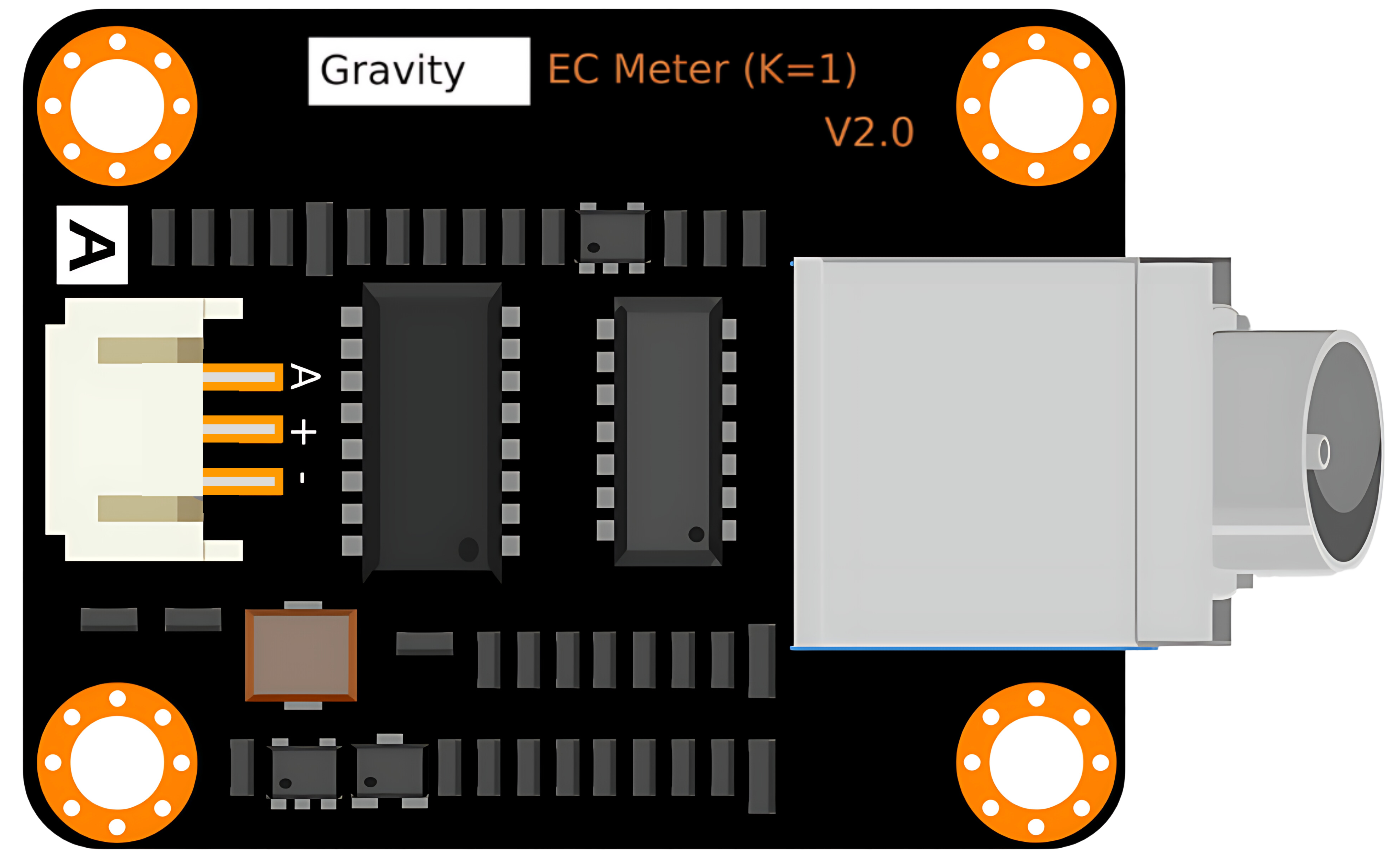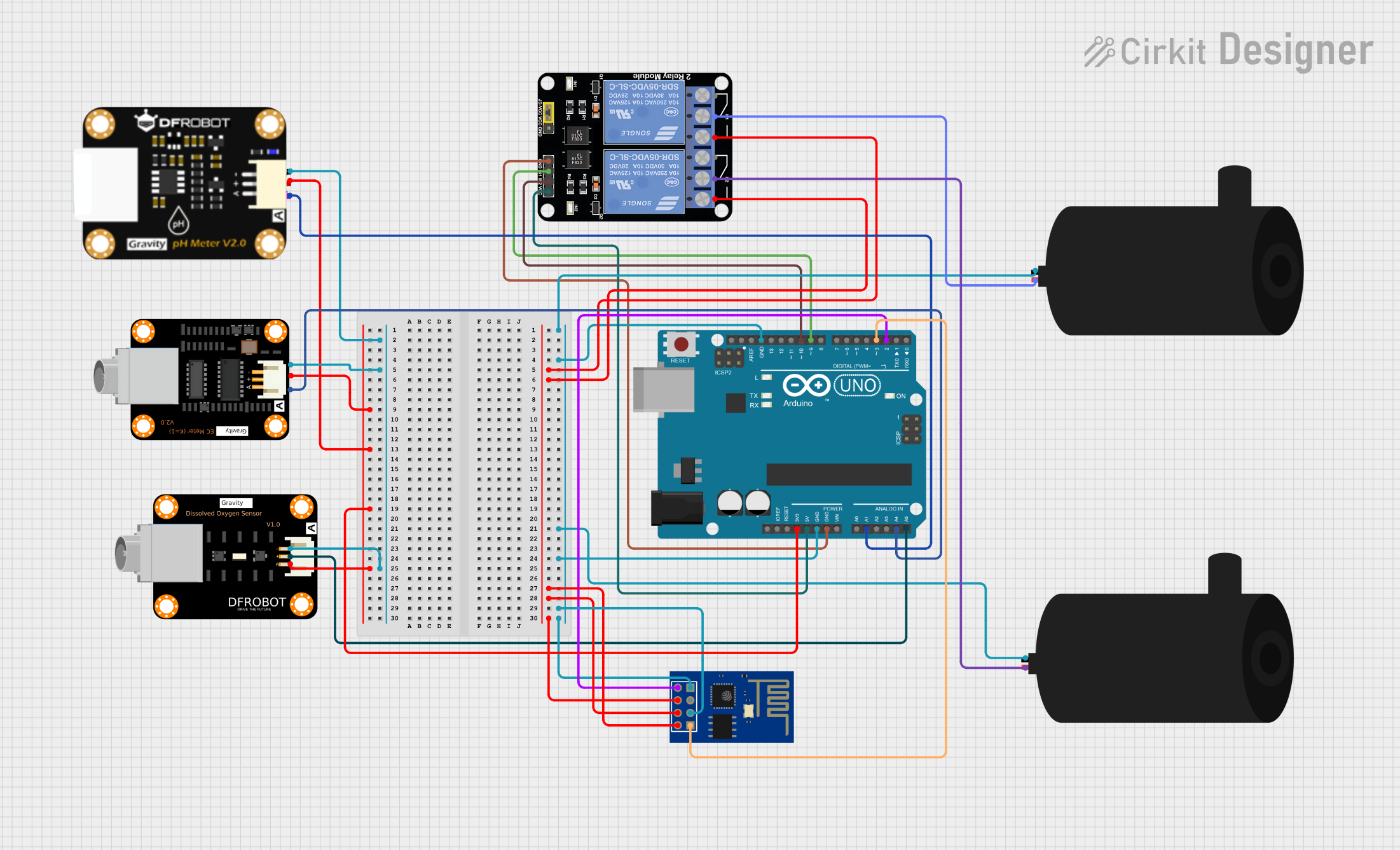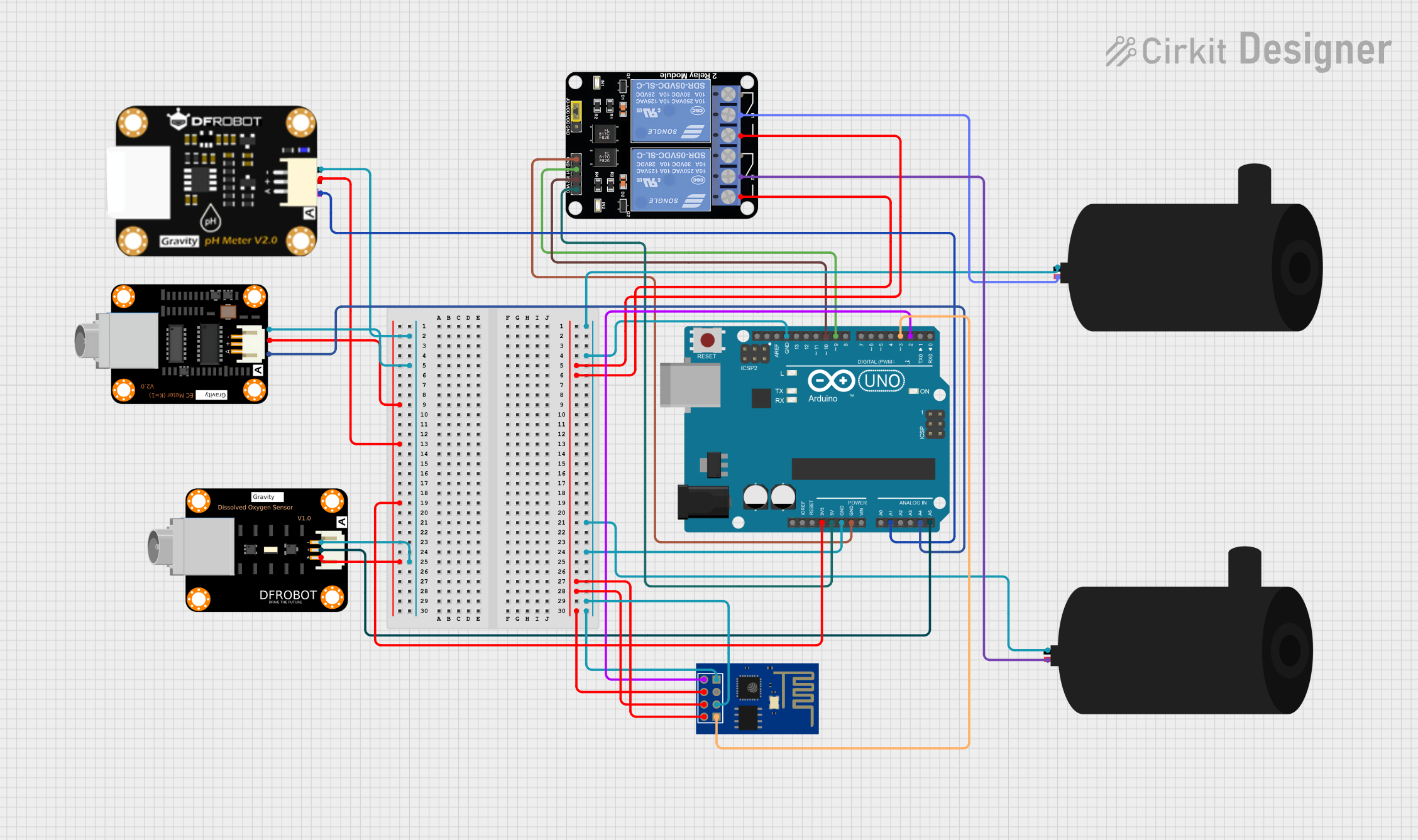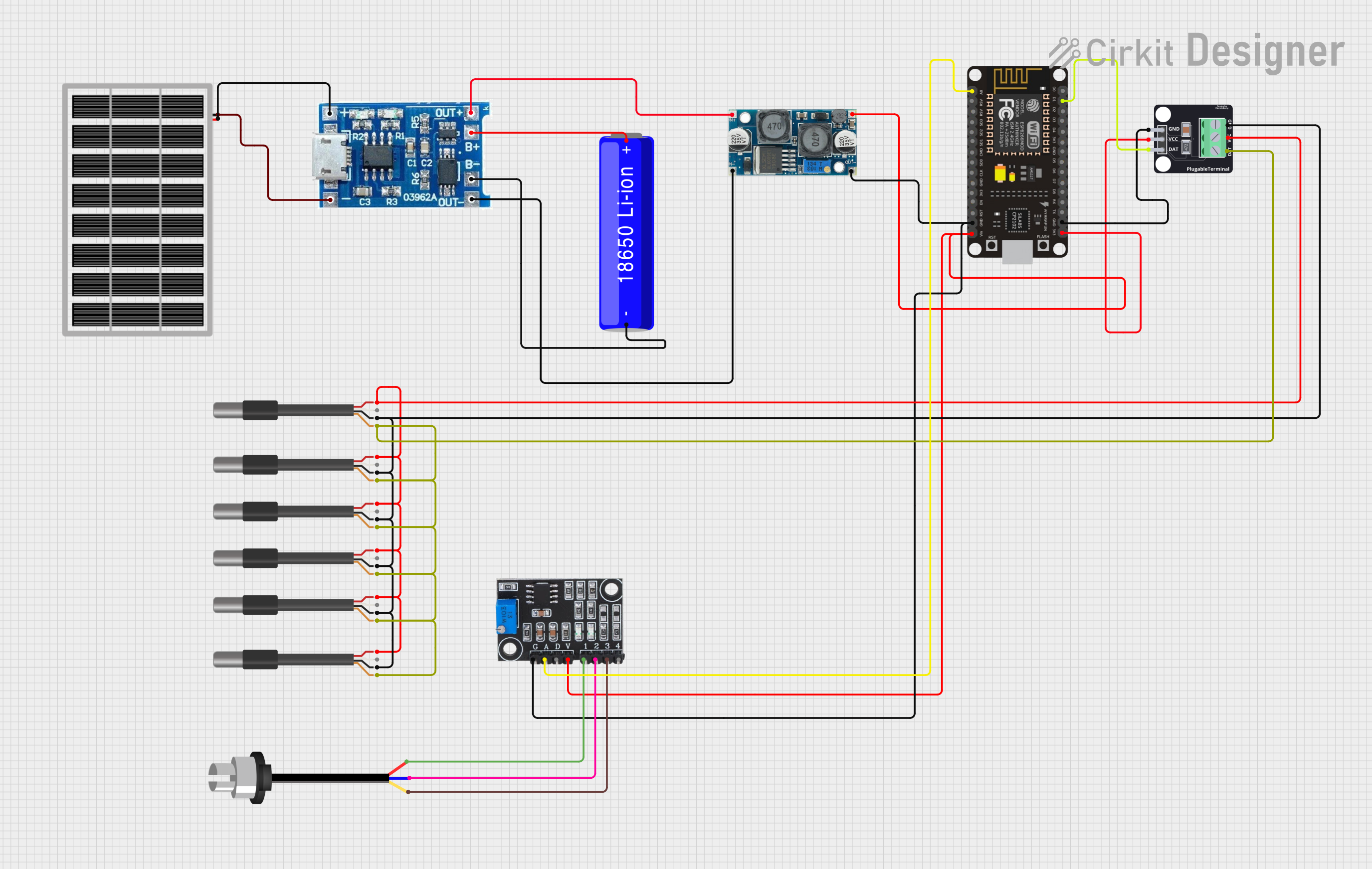
How to Use Modulo Sensor Conductividad Electrica / Electrical conductivity: Examples, Pinouts, and Specs

 Design with Modulo Sensor Conductividad Electrica / Electrical conductivity in Cirkit Designer
Design with Modulo Sensor Conductividad Electrica / Electrical conductivity in Cirkit DesignerIntroduction
The Electrical Conductivity Sensor Module is an electronic device designed to measure the electrical conductivity (EC) of a solution. It is an essential tool in various fields such as water quality monitoring, agriculture, hydroponics, and aquaculture. By measuring EC, users can determine the concentration of ions in a solution, which is indicative of the solution's ability to conduct electricity. This information is crucial for assessing water salinity, nutrient levels in soil or hydroponic systems, and for general chemical analysis.
Explore Projects Built with Modulo Sensor Conductividad Electrica / Electrical conductivity

 Open Project in Cirkit Designer
Open Project in Cirkit Designer
 Open Project in Cirkit Designer
Open Project in Cirkit Designer
 Open Project in Cirkit Designer
Open Project in Cirkit Designer
 Open Project in Cirkit Designer
Open Project in Cirkit DesignerExplore Projects Built with Modulo Sensor Conductividad Electrica / Electrical conductivity

 Open Project in Cirkit Designer
Open Project in Cirkit Designer
 Open Project in Cirkit Designer
Open Project in Cirkit Designer
 Open Project in Cirkit Designer
Open Project in Cirkit Designer
 Open Project in Cirkit Designer
Open Project in Cirkit DesignerTechnical Specifications
Key Technical Details
- Measurement Range: Typically 0 to 10 dS/m (decisiemens per meter)
- Accuracy: ±0.1 dS/m or better
- Supply Voltage: 3.3V to 5V DC
- Output Voltage: 0 to 3.0V DC proportional to EC value
- Operating Temperature: 0°C to 50°C
Pin Configuration and Descriptions
| Pin Number | Name | Description |
|---|---|---|
| 1 | VCC | Power supply (3.3V to 5V DC) |
| 2 | GND | Ground connection |
| 3 | AOUT | Analog output voltage |
| 4 | TEMP | Temperature sensor output (if available) |
Usage Instructions
Integration with a Circuit
- Connect the VCC pin to a 3.3V or 5V power supply.
- Connect the GND pin to the ground of the power supply.
- Connect the AOUT pin to an analog input pin on your microcontroller.
- If the module has a TEMP pin, connect it to another analog input pin to measure temperature.
Calibration
Before using the sensor, it is essential to calibrate it using solutions of known EC values. Follow the calibration procedure provided by the manufacturer to ensure accurate readings.
Best Practices
- Always rinse the sensor with distilled water before and after immersing it in a solution.
- Avoid touching the sensor electrodes as oils and contaminants can affect readings.
- Use temperature compensation if the module provides a temperature sensor output, as EC readings can be temperature-dependent.
Example Code for Arduino UNO
// Define the analog input pin for the EC sensor
const int ecSensorPin = A0;
void setup() {
// Initialize serial communication at 9600 baud rate
Serial.begin(9600);
}
void loop() {
// Read the value from the EC sensor
int ecValue = analogRead(ecSensorPin);
// Convert the analog reading to EC value (example conversion, may vary)
float ec = ecValue * (5.0 / 1023.0); // Convert to voltage
float conductivity = ec * 1000; // Convert voltage to EC in µS/cm
// Print the EC value to the Serial Monitor
Serial.print("EC: ");
Serial.print(conductivity);
Serial.println(" µS/cm");
// Wait for a second before reading again
delay(1000);
}
Troubleshooting and FAQs
Common Issues
- Inaccurate Readings: Ensure the sensor is properly calibrated. Check for any contamination on the sensor electrodes.
- No Readings: Verify that the sensor is correctly powered and that all connections are secure.
- Temperature Fluctuations: Use the temperature sensor output to compensate for temperature variations in your EC readings.
FAQs
Q: Can the sensor be left in the solution continuously? A: It depends on the sensor's design. Some sensors are made for continuous immersion, while others are not. Check the manufacturer's recommendations.
Q: How often should the sensor be calibrated? A: Calibration frequency depends on usage, but it is generally recommended to calibrate the sensor before each critical measurement or after a significant change in the type of solution being measured.
Q: Is the sensor waterproof? A: The sensor probe is typically waterproof, but the electronic components and connections are not. Ensure that only the probe is immersed in the solution.
Q: What is the lifespan of the sensor? A: The lifespan can vary based on usage and maintenance. Regular cleaning and proper storage will extend the sensor's life.
Remember to consult the manufacturer's datasheet for specific details and instructions related to your particular EC sensor module.